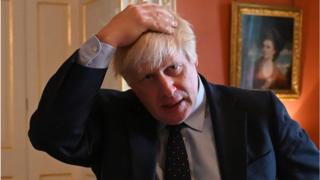How feasible are the government’s spending plans?
 Image copyright Getty Images
Image copyright Getty Images The big message the government will try to send with its spending round is about the austerity decade ending.
In particular the thing it will want to get across is that funding is pouring into those public services most visibly problematic for the Conservatives in the 2017 general election, ahead of yet another fairly imminent visit to the polls.
Health, education, and the police will be boosted just in time.
Total departmental spending will rise for the first time since before the crisis.
The political strategy will be clear: neutralise the toxicity of visible spending cuts made to shrink the deficit since the crisis – in order to help win over Leave voters in traditionally Labour seats.
And the good news for the Chancellor and the First Lord of the Treasury, the PM, is that there is some space for this spending.
Borrowing costs are low. And deficits have not been lower for 17 years too.
So we will hear a lot about the phrase “fiscal headroom”.
This is not extra money that can be spent, it is extra borrowing. It is room to borrow more within the government’s self-imposed overdraft limit of 2% of the value of the national economy.
How much headroom?
The magic number is £15bn. It had been £27bn, but there have been some changes in the way student loans are accounted, that have served the purpose of helping the Treasury apply at least some limits.
So £15bn it is, and already the bulk of that has been allocated in announcements to fund the NHS, schools, further education, defence, policing, and foreign aid.
We will get further detail on the rest of it, and there is enough space essentially to provide at least inflation-terms rises for all departmental spending. It will be quite a moment.
But the real question is for just how long?
Firstly this is not the ordinary three-year spending review. That has effectively been delayed until after Brexit. This is a one-year spending round.
It is also being separated from the Budget. This has the happy coincidence that there are no new independent fiscal forecasts from the Office of Budget Responsibility.
If there had been, it turns out that – both because the economy has slowed since March, and also because the deficit is running larger than forecast – the £15bn number could be considerably smaller, perhaps more than halved.
No-deal war chest
On top of that, one has to note that the headroom was left by the previous Chancellor to help deal with the consequences of a no-deal Brexit.
The OBR said in July that even in a modest scenario that could mean a £30bn annual hit to the public finances.
And yet the plan is not to just to spend the headroom that might not exist, but to go further in the coming weeks and cut taxes on fuel, housing and beyond.
Small wonder that at the next Budget the government’s tax and spending constraints – its fiscal rules – will be reviewed.
Generally speaking, new Chancellors want to establish fiscal credibility in their first fiscal events. In some ways, at least for a few hours, the shadow chancellor, whose plans are, on paper, funded from tax rises, will.
The very point of the fiscal framework that has been created over the past few decades was to try to inject some long-term thinking, some stability, and avoid the temptation to rig forecasts to enable unsustainable pre-election giveaways.
A pre-election spending round risks undermining that.
But that’s a small price for the greater prizes sought by politicians within weeks of a possible election.



